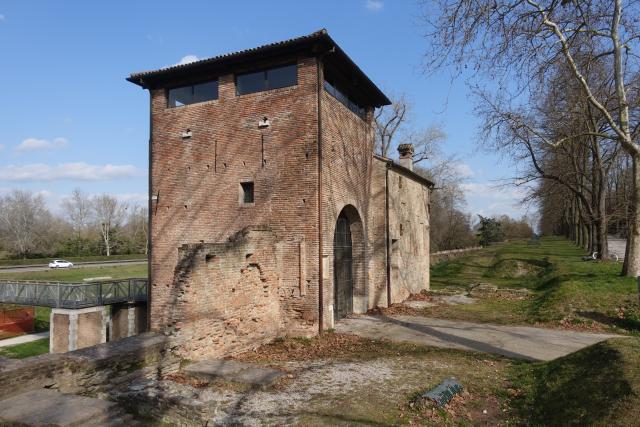Ferrara walls

This extensive nine kilometer wall was one of the most imposing defensive systems of the Middle Ages and the Renaissance.
This extensive nine kilometer wall that surrounds Ferrara was one of the most imposing defensive systems of the Middle Ages and the Renaissance.
The northern wall was built between 1493 and 1505 after the construction of the Addizione Erculea (enlargement of the city to the north), characterized by semicircular turrets and a long walkway for sentinels.
At the northwest end, the tower of the Ship stands out, to the north the Porta degli Angeli and to the east the tower of San Giovanni.
The eastern section of the wall was conceived by Alfonso I d'Este between 1512 and 1518, in which the Doccile di San Tommaso stands out, a conduit for the discharge of urban waters, and the artificial hill of the Baluarte della Montagna.
The southern fortification is characterized by four imposing bastions located in the shape of an "ace of spade", built between 1575 and 1585 by the will of Alfonso II. In this section, the Porta di San Pietro, which connects the city with the Volano River, has been reopened.
South of the walls is the Porta Paola, built in 1612 after the transfer of Ferrara to the Papal State.
The part of the wall that leads to the west is the one that has undergone the greatest transformations. There are two bastions that were part of a grandiose pentagonal fortress, which was later demolished.


